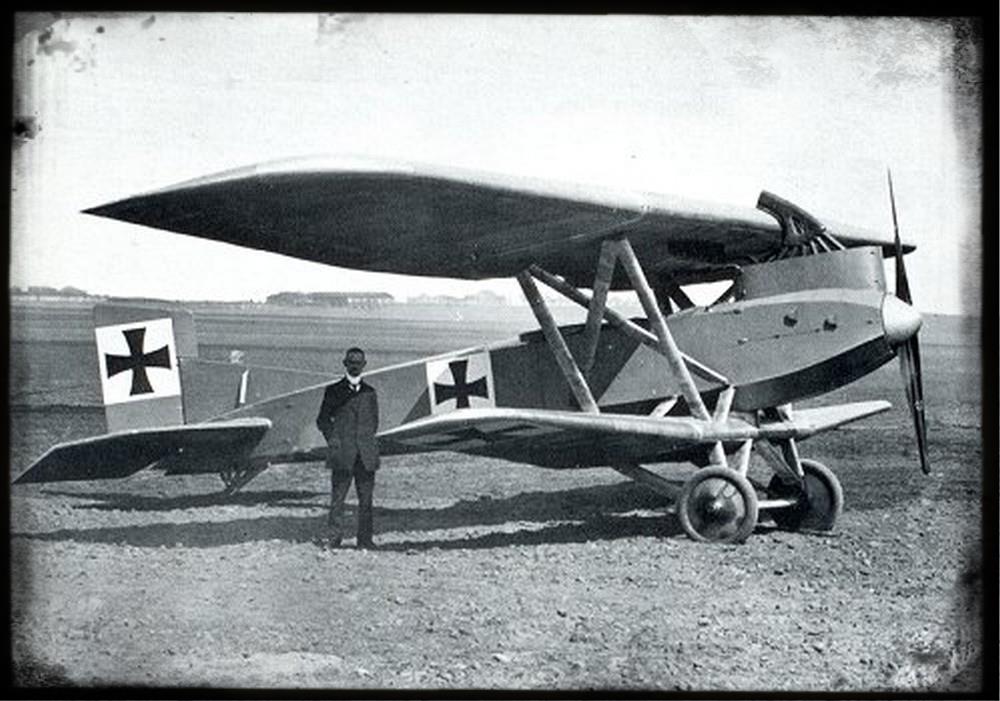Junkers J4 (J.I)
see also: J4 Production List / Junkers J4 Survivors / J4 Model Kits
All Metal Combat Aircraft, First Flight 17 Jan 1917, 227 built
developed by Junkers + Co. in Dessau, built at Junkers-Fokker Flugzeugwerke
Historical Background:

Junkers himself was not much engaged in the J4 design. He transfered the responsibility for this new aircraft to Dr. Mader, who was supported by Reuter, Steudel and Brandenburg, as well as by Madelung, who was sent to Dessau by the IDFLIEG. The principle ideas of the J3 design were transfered to the J4. The aircraft was designed with a Duralumin fuselage tube construction and the wings were constructed by corrugated Duralumin sheets and tubes. While the pilot's and oberserver's seat area were protected by a chrome nickel steel plate, the rear part of the fuselage tube construction was covered with textile coverings. The tail unit again was constructed in Duralumin structure.
The first test runs of the J4 was performed on January, 17th 1917 by Arved v. Schmidt of IDFLIEG. The first take off was performed on January 28th, 1917 at Doeberitz. Following this successfull first flight, the aircraft was transfered to Adlershof at Berlin, where the type tests were performed. On May 7th, 1917 the J4 received its IDFLIEG certificate as Junk.1, also called J.1, which still today cause difficulties in the separation of the Junkers J1 and the Junkers J4. Already in March 1917 the IDFLIEG placed a further order for 50 J4 aircraft. The serial production of these initial aircraft was started in June 1917 and in August 1917 the first aircraft were delivered to the operational front units. In sofar the Junkers J4 was the first serial produced Junkers aircraft.
Compared to the three prototypes, the serial production aircraft showed some significant differences. The most obvious difference is to be seen at the ailerons. While the ailerons are completely integrated in the prototype's wing, the ailerons at the serial aircraft were projected out the end of the wing. Also the wing span of the serial aircraft was slightly increased.
Further developements on the J4 were made. On July 16th, 1918 a first Junkers J4 was equipped with the new Daimler-Mercedes engine D IVa. This new engine offered a better climb rate, better maneuvering of the aircraft and required less runway length, which was required for the front operations. But as the Daimler was not able to supply enough D IVa engines, the serial production of the J4 was still equipped with the Benz engine.
Following the initial order of 50 aircraft, the IDFLIEG ordered another 100 J4 aircraft in late 1917. A further 130 aircraft were ordered in 1918. Therefore a total of 283 Junkers J4 aircraft were ordered by IDFLIEG until the end of WWI. A total of 184 aircraft were delivered to IDFLIEG until October 1918. Another 43 aircraft were already completed, when the war was over. They were delivered to IDFLIEG until March 1919. The total production of the J4 stopped with 227 out of 283 ordered aircraft including the three prototypes.
In February 1919 some of the final J4 serial aircraft were also equipped with Duralumin panels at the rear fuselage instead of the textile covering. It seems, as if some of the Junkers J4 aircraft were also transfered to the Austrian K. u. K. Luftfahrttruppen.
year engine length
in m span
in m wing area
im sqm net weight
in kg payload
in kg seats speed
in km/h range
in km
Weblinks:
- Junkers.de - J.I Desricption (German)
- Fliegerweb.com - J.I Desricption (German)
- John Weatherseed Presentation - Video Documentation of his presentation of the J4 (Youtube)
- airwar.ru - Site with a lot of J4 Photos and textes (Russian)
Literature:
- Peter Grosz
Windsock Datafile No. 39: Junkers J.I
Albatros Publications, May 1993, ISBN 0948414499
introduced Jul 1996, transfered Jun 2017
contents last updated 23 Dec 2002
<img alt="" src="http://vg06.met.vgwort.de/na/0427f390e55444b2a51a81f4bfcf7fc4" width="1" height="1">

